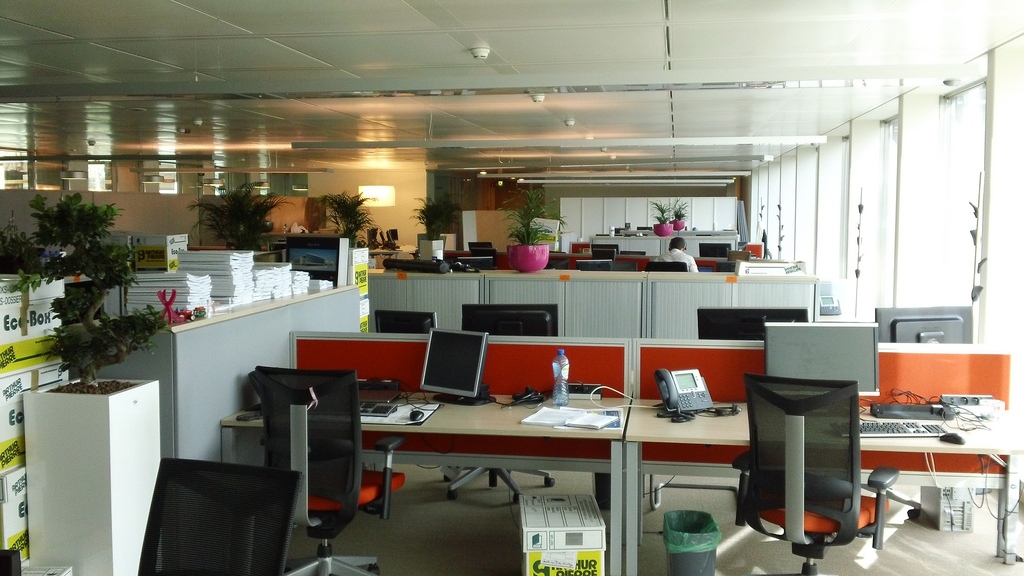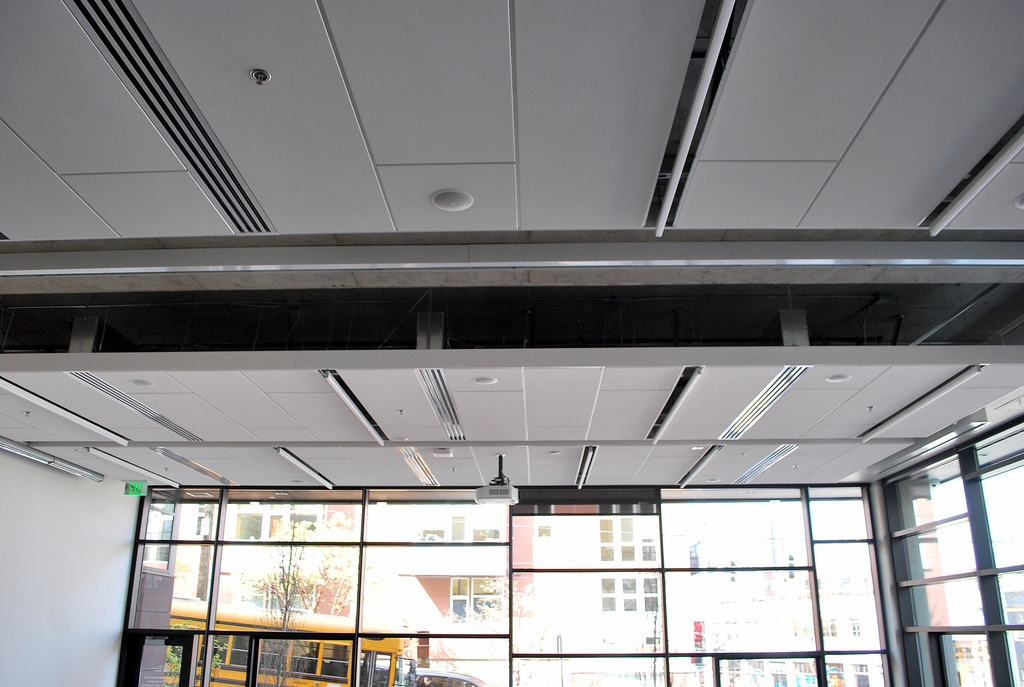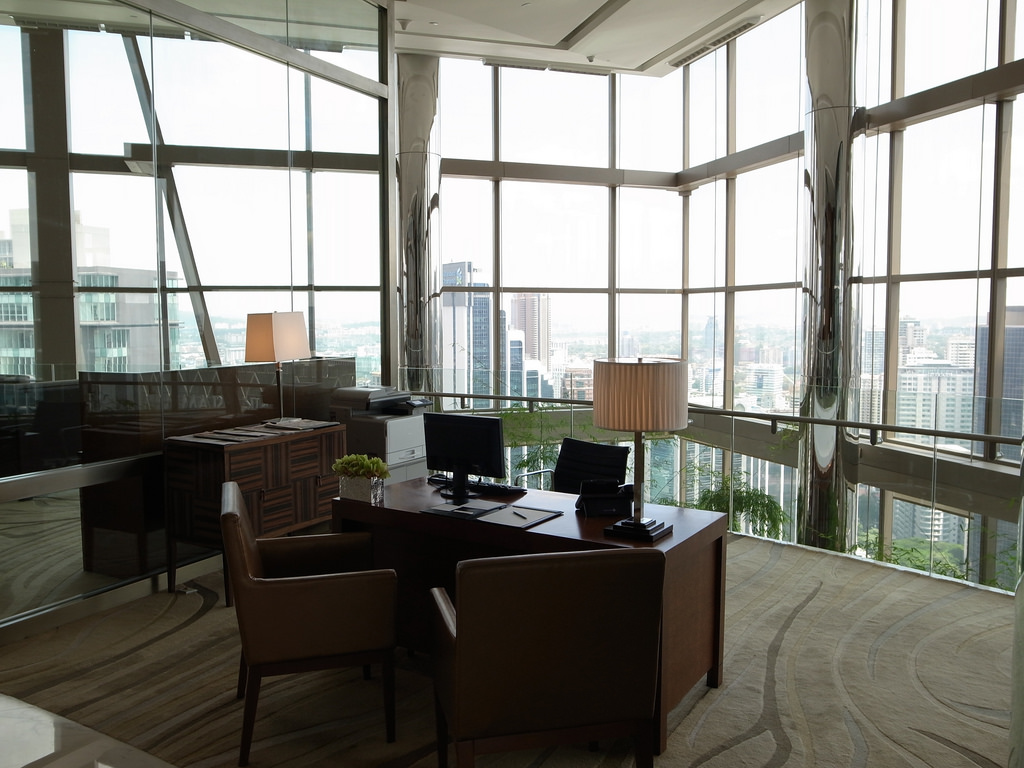When it comes to noise reduction in office buildings, there are two types of treatment: noise insulation and noise absorption. The first one, also called soundproofing, includes blocking the noise coming from the outside, while the latter one addresses the sound scattering around the room.
Since the noise caused by outside sources, such as traffic in residential areas and the one caused by co-workers in an open-plan office can significantly distract employees, investing in both treatments is highly recommended.
Desired Sound Levels
In a study investigating noise in the office workplace, the author quotes another research examining the sound levels for ideal work setting. Office workers chose the range between 48 and 52 dbA for perfect workspace. While the office conversation is interfered at 50 dbA, common sounds including whispering (34 dbA), conversation (60 dbA) and airplane overhead (115 dbA) are distractions, causing decreased productivity, stress, fatigue, lower morale…

Noise Insulation
Given the proven benefits of double glazed windows, this solution imposes itself as the logical solution for effective noise insulation in the office. Comparing it to single-glazed windows, the sound insulation of partially open double glazed windows is about 10 dbA better their single glazed counterparts. Good acoustic control requires the 100-150 mm gap between two panes, we learn from double glazing experts from Perth. On what levels the noise reduction is accomplished depends on the thickness of the glass and the type of windows. Openable weather-stripped double glazing windows (4mm + 4mm glass) with 100mm separation can have noise reduction up to 30 dbA, while fixed double glazing windows (6mm + 6mm glass) with permanent seals can acoustically isolate the room by 40 dbA.
Noise Absorption
The study previously mentioned states the noise is disruptive when it is unpredictable and when workers do not have control over its source, which is the case with office conversations and office equipment including telephones, printers and computers.

Acoustic Panels
Acoustic panels absorb sound unlike windows which block it. In a regular room, sound travels through the room bouncing off the walls, floors and other hard surfaces. If panels are installed, sound hits the panels, the panel absorbs it preventing it from travelling around the room. Acoustic office panels come in a range of shapes, colors and patterns. In addition, there are various art printed panels, which can complement your overall office design, while some companies offer custom-printed panels, as well.
Acoustic panels are made of three layers: the absorptive filling, the frame (for shape), and the acoustically transparent covering. The filling can be made of foam, fiberglass, or eco-friendly Eco-C-Tex, or cotton. The effectiveness of panels is measured with a NRC (Noise Reduction Coefficient). The NRX ranges from 0 (completely reflects sound) to 1 (completely absorbs sound). The NCR of 0.5 indicate that 50% of sound waves are absorbed.
Hanging Baffles
Hanging baffles work the same way as acoustic panels. They too can contain foam, fiberglass, or cotton and can be found in natural, painted white, or any other custom color. The only difference compared to panels is that baffles are hanged on the ceiling. Depending on the type of baffles, they can be hanged vertically, or horizontally.

Acoustic Partitions
Even though some companies offer custom-made partitions, they are not suitable for small offices as they are free-standing and movable. On the other hand, partitions are ideal for large collaborative offices. Not only do they absorb sound, but they can be used for creating temporary work stations and solving the issue of privacy common in these kinds of work environments.
Plants
The same way large trees reduce noise along highways, plants can change acoustics in offices, too. They have the same function as panels, partitions and hanging baffles as they reduce reverberation time. A rule of thumb is one plant every 100 square feet. Since they should be placed near walls in order to do the job, green walls are also both functional and esthetically pleasing options.
Effective noise reduction in offices includes both noise absorption and noise isolation. Depending on the size of the office and its overall design, you can choose among hanging baffles, partitions and panels. Plants, on the other hand enhance the appearance of the office whether you would choose them for sound absorption, or not.

